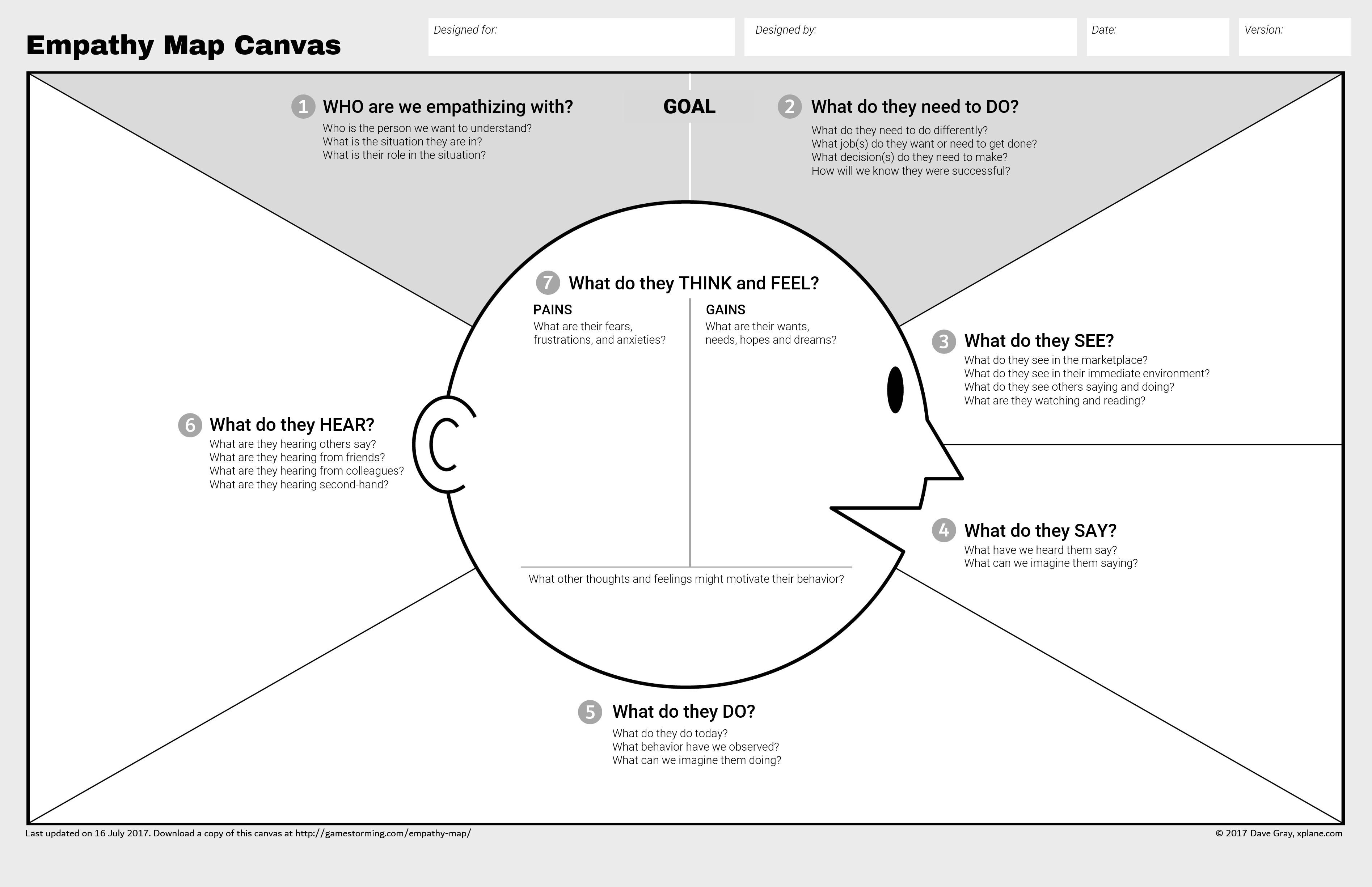What
Empathy Maps help gain a deeper understanding of Stakeholders in a Project or Product Ecosystem. They locate a stakeholder in a specific task or decision-making context and help think through what they are perceiving, saying and doing, and which pains they experience and gains they expect. Empathy Maps are a low-effort way to start thinking more deeply about stakeholders and identify gaps in understanding them.
Why
- Create a rough stakeholder profile
- Deepen understanding of the stakeholder
- Understand their experiences and expectations
How
- Number of participants: 3–10
- Time needed: 20–30 mins for one iteration
- Material:
- Sticky notes in different colours
- Thick black markers
- Large board or wall space
- Empathy Map Template
Empathy Maps help develop shared understanding and empathy for stakeholders in a project or product development ecosystem. They are a low-effort way to describe the situation they’re in, take their perspective, and think through what they perceive, say and do, and which pains they experience and gains they expect.
You build an Empathy Map by filling the following template collaboratively, ideally in a group of 3–10 people:

Start with the Goal section: define who will be the subject of the Empathy Map and describe what they need to do in their current situation. This should be an observable behaviour, not a subjective ideal.
Once you have clarified the goal, work your way clockwise around the canvas, until you have covered Seeing, Saying, Doing, and Hearing. By focusing on observable phenomena (things that they see, say, do and hear), you take the perspective of the stakeholder under consideration. This gives you a chance to imagine what their experience might be like and provides you with a sense of what it “feels like to be them”, i.e. to empathise with them.
After you have made the circuit of outside elements, focus on what’s going on inside their head: describe the Pains they are experiencing and the Gains they are expecting or longing for in their current situation. Doing this after having taken the stakeholder’s perspective on their environment in the previous step helps you think about the pains and gains from their, not from your perspective.
Tips
- Use Empathy Maps when you’re stuck with other, more involved methods like Personas or Customer Journey Maps; they will help you generate insights that get you unstuck.
- Use sticky notes to capture insights about the stakeholder you’re describing.
- Note first, discuss later.
Where
- Can process output of: Stakeholder Map
- Can feed input to: Persona, Stakeholder Map, Customer Journey Map, Problem Statement
Caveat
In a business context, the use of this method can be implicitly consumerist – Customer-centric means consumerist most of time. When using the method, it should always be transparent whether the business goal is ultimately about creating new consumer needs or about improving how existing ones are being served.
Provenance
Originally developed by Scott Matthews, popularisation and further development by David Gray in Gray (2010). Summary and description adapted from the linked sources.
References
- Gray (2009): “Empathy Map”
- Gray (2010): Gamestorming